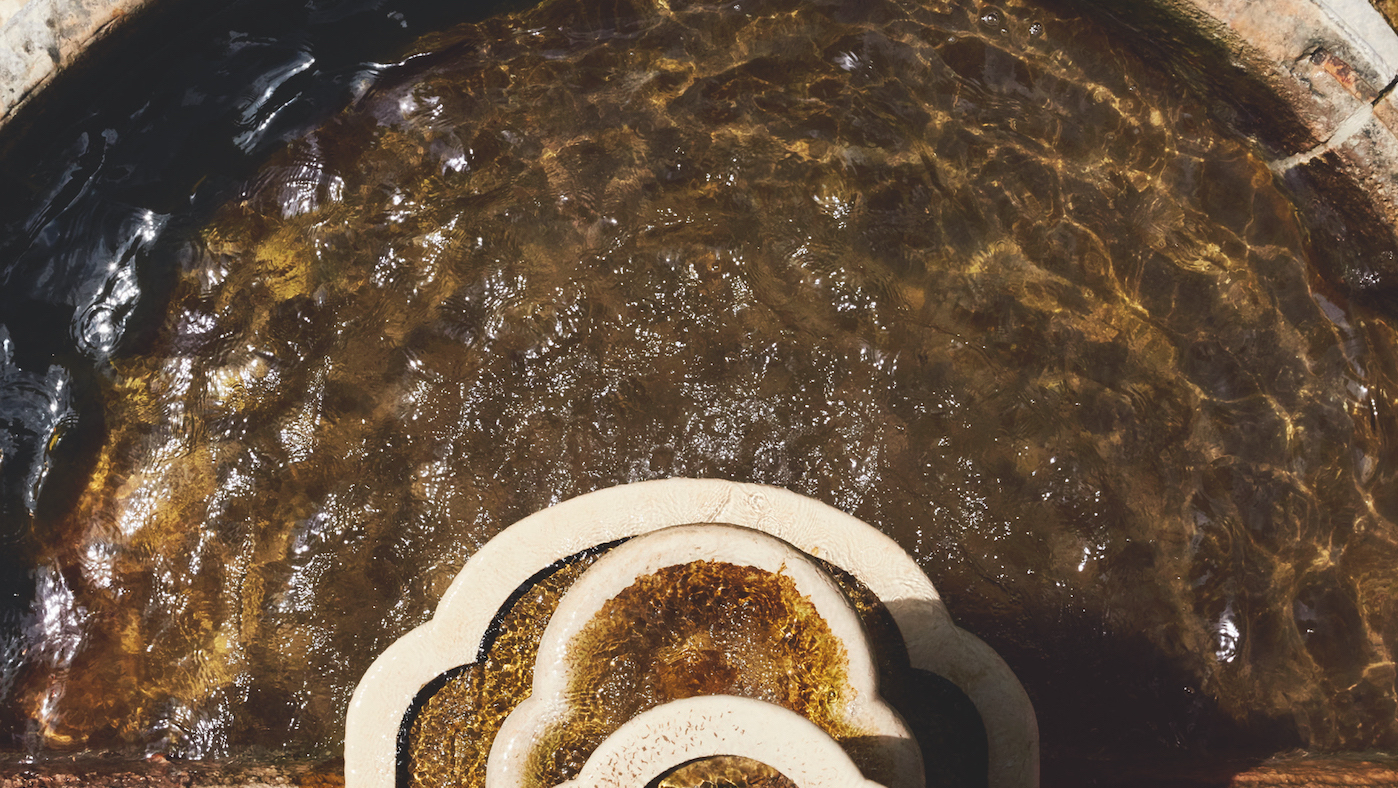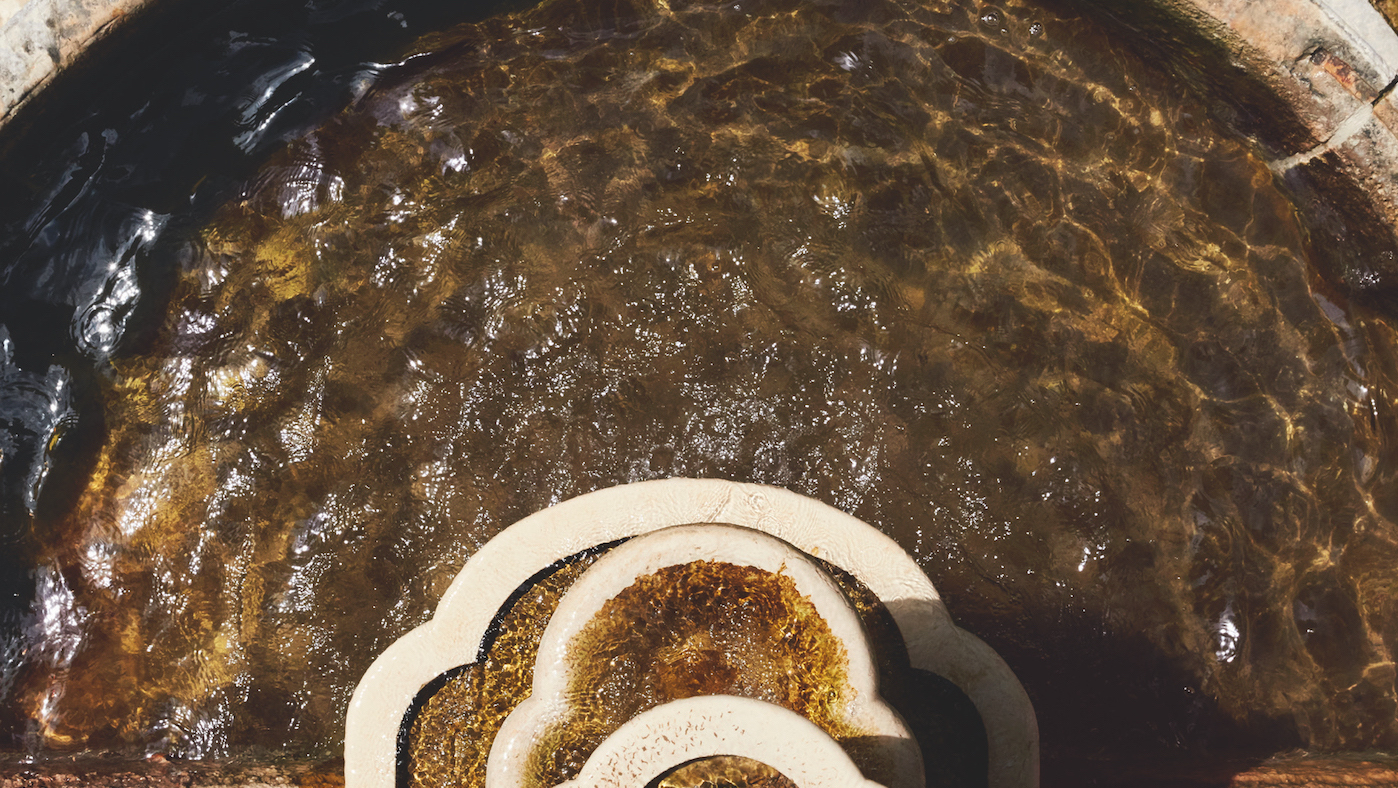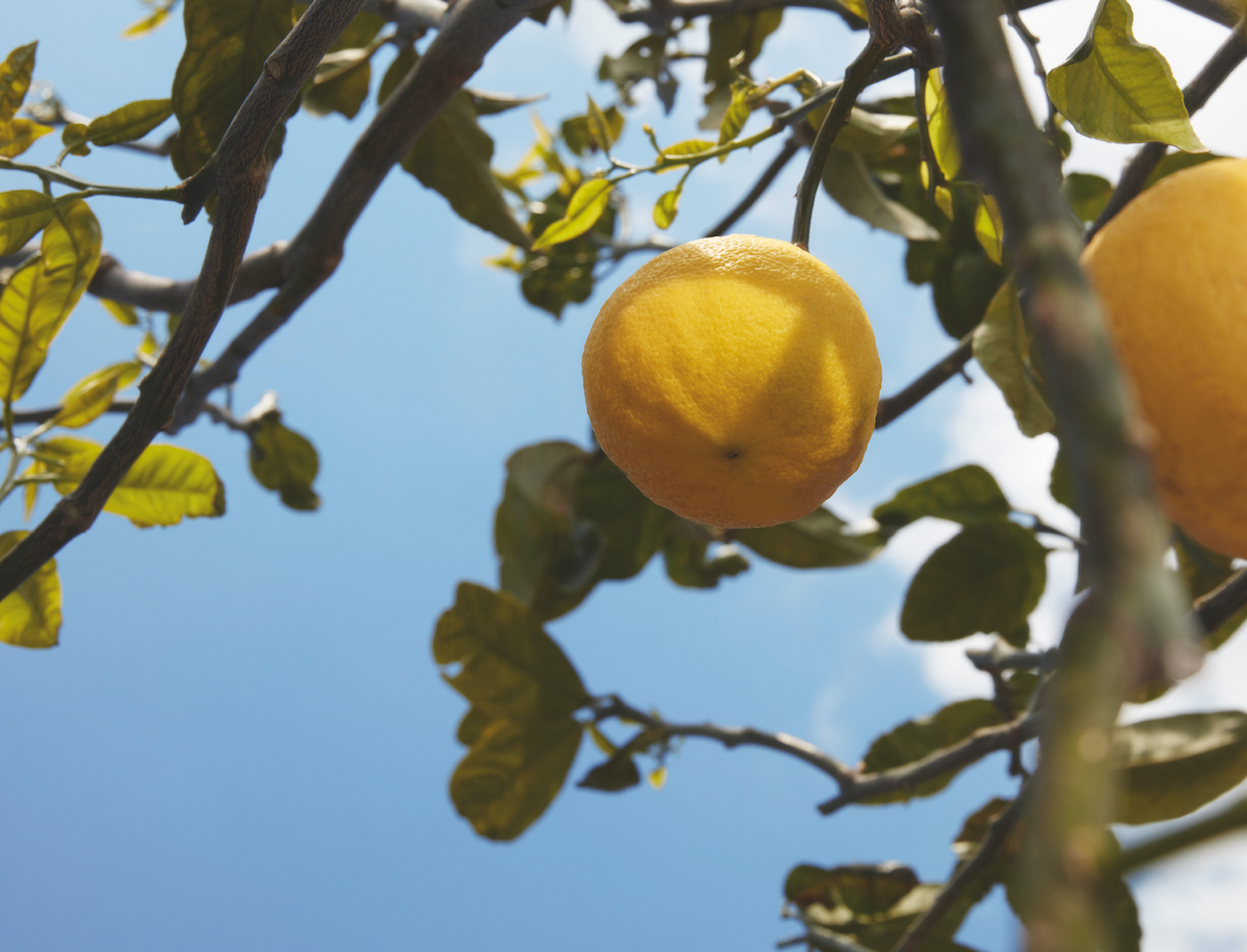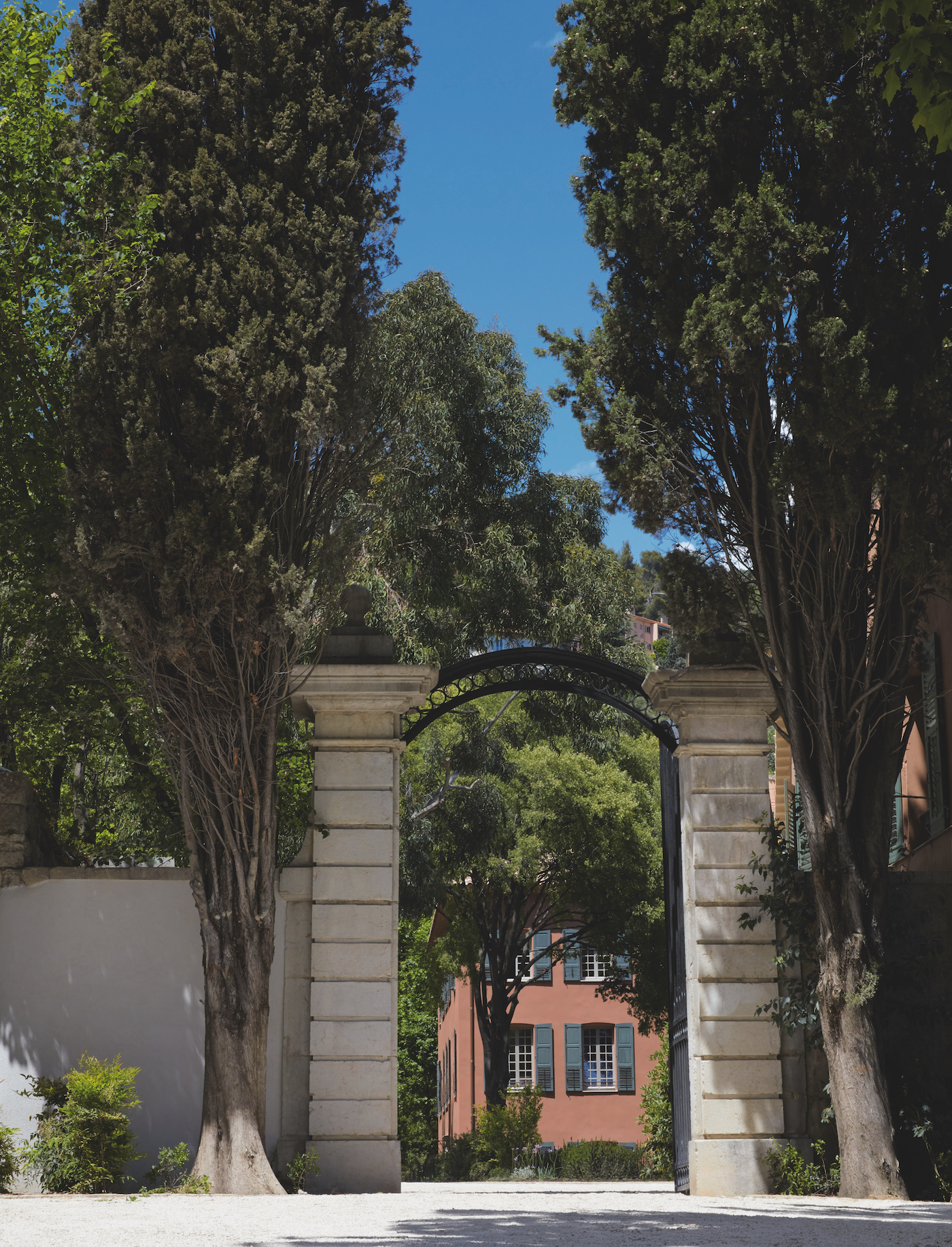The scent of Louis Vuitton
The Week Portfolio visits Louis Vuitton at Les Fontaines Parfumées in Grasse

At Les Fontaines Parfumées, a Provençal estate in Grasse, lies the secret gardens of Louis Vuitton. The name Fontaines Parfumées - or scented fountains - is indicative of the magic that goes on behind closed doors at LVHM's gated 9,900 square metres estate, which counts a 17th century terracotta Bastide style mansion, watermill and stone fountain.

The luxury conglomerate acquired the land in 2013 and following an intense period of restoration, largely carried out by local artisans, inaugurated its new olfactory creative centre in September 2016. Located at the heart of the world's historic capital of perfume, the gardens of Les Fontaines Parfumées' include flowerbeds that can be appreciated at very close range, sometimes in quite unconventional ways: visitors are encouraged to walk straight through a bed of mint plants; a detour that encourages the release of aroma, which includes the invigorating strawberry and menthol scent of Menthe fraise, a bright green variety with edible lilac flowers.

This fragrant patch of green has been created in collaboration with Jean Mus. Born in Grasse, the landscape designer is today based in the nearby village of Cabris from where he has sketched gardens for Saint Jean Cap Ferat's Grand Hotel du Cap, The Ritz Paris and the Hotel Alpina in Gstaad, Switzerland. Mus' ambitious plans for Les Fontaines Parfumées included the preservation of local fig trees and flowering Acanthus plants; he also planted citrus trees originating from around the world such as Calabrian Bergamot. The site's 350 plant species guarantee fragrant blooms throughout the year; January's bright yellow Mimosa flowers in the shape of miniature pompoms, followed by violets in February and March's lily of the valley.
The Week
Escape your echo chamber. Get the facts behind the news, plus analysis from multiple perspectives.

Sign up for The Week's Free Newsletters
From our morning news briefing to a weekly Good News Newsletter, get the best of The Week delivered directly to your inbox.
From our morning news briefing to a weekly Good News Newsletter, get the best of The Week delivered directly to your inbox.
Grasse is the location of two annual flower festivals. In May, the three-day ExpoRose festival transforms the Provençal town into a horticultural paradise with thousands upon thousands of bouquets and cut roses decorating monuments, shop fronts and public squares. Come August, visitors flock here to celebrate the beginning of the jasmine harvest, a tradition that stems back to the 16th century.
This fragrant white-petalled flower, which originates from India but was introduced to Grasse in 1560 is considered sacred in these parts. At Les Fontaines Parfumées, Louis Vuitton have planted more than 1000 Jasmin grandiflorum bushes at Les Fontaines Parfumées; there are also 3,000 tuberose plants and 300 Grasse May – or Centifolia – roses which bloom into a heavy head of pink for just four weeks a year and are prized in perfumery for their fresh and delicate scent.
For master perfumer Jacques Cavallier Belletrud, the multi-sensory experience of the gardens is one of the highlights of working at Les Fontaines Parfumées. "In the mornings and in the afternoon, I go into the gardens and I smell flowers and leaves. It brings me back to reality, which is always good for creativity. And it also brings inspiration", says the Frenchman. "I've always been passionate about natural raw materials".

Born in Grasse, Cavallier Belletrud, 56, is a third-generation perfumer. He first learned to distill flower essences while working at local factories as a teenager; the award-winning 'nose' has since dreamt up fragrances for brands such as Yves Saint Laurent, Givenchy, Giorgio Armani and Alexander McQueen. His best-selling scents include L'Eau d'Issey (1992) for Issey Miyake, Stella McCartney's eponymous 2003 debut fragrance and Classique, the 1993 rose, anise and ginger concoction for Jean Paul Gaultier. "It's very important for me to be based in Grasse", says Cavallier Belletrud. “Grasse, and particularly Les Fontaines Parfumées, is the place where I realise my ideas. Perfume is universal, but the meeting point is in Grasse, where we re-work materials into perfumes.”
A free daily email with the biggest news stories of the day – and the best features from TheWeek.com
Cavallier Belletrud joined Louis Vuitton in 2012; in his role as Maître Parfumeur he is charged with redefining the brand's olfactory identity after a seven-decade hiatus. Established in Paris in 1854, Louis Vuitton first delved into fragrance in the 1920s: vanity cases designed for travel included engraved crystal perfume phials crafted in collaboration with artists such as sculptor Gaston Le Bourgeois.
This was followed by the marque's 1927 debut fragrance Heures d'Absence - decanted in rectangular bottles adorned with a plane pictured mid-flight in homage to the brand's travelling heritage – and Je, tu, il in 1928. Eau de Voyage, Louis Vuitton's final fragrance was released in 1946. Today, all that remains of the three fragrances are empty flacons - some of which are on display at Les Fontaines Parfumées, under lock and key in glass cabinets – giving Cavallier Belletrud carte blanche to imagine the brand's contemporary scent, a task that requires a sympathetic understanding of the brand's values.
In August 2016, Cavallier Belletrud unveiled his first creations for the brand, a debut collection of seven women's fragrances available in two sizes (100ml and 200ml), including Matière Noire which contrasts fresh blackcurrant notes with the deep accords of oud wood. Earlier this year, Cavallier Belletrud added Le Jour Se Lève, a mandarin packed fragrance inspired by the warmth and light of sunrise. "Quality" is his straight-forward reply when I ask what makes a Louis Vuitton fragrance. "It's about being discreet but remarkable". All his creations for the Parisian heritage brand include the notes of locally grown plants, from Grasse jasmin (Apogée) to tuberose (Turbulences).
A picturesque medieval town, Grasse has been a site of perfume production since the end of the 17th century. Local attractions include an 11th century Roman Catholic church dedicated to Notre Dame du Puy which has been the town's cathedral since 1244 and houses three Rubens paintings in addition to a 1755 Rococo style painting by Fragonard, one of the few religious scenes attributed to the Grassois artist. "Grasse is a very special place, dedicated to the art of the perfume", says Cavallier Belletrud of his hometown, which is today considered the cradle of contemporary perfumery. The town's 1989 opened International Perfume Museum traverses the history of perfume from Ancient Greece to the present day thanks to no less than 50,000 artifacts. Nearby its Boulevard du Jeu de Ballon base, the museum also looks after a historic orange garden first landscaped in 1779. Three local heritage perfume factories - Molinard (1849), Fragonard (1926) and France's oldest workshop of its kind, the 1747 opened Galimard - offer guided tours.
Back at Les Fontaines Parfumées, Cavallier Belletrud works from his office, where a desk is strewn with fragrance samples, blotters and souvenirs; alternatively, he can be found with his small team in the in-house atelier on the building's top floor. "We work like a family here", he says. "For me, that is important because we are speaking about beauty, we are trying to create beauty". The elegant laboratory which is gently lit by a cathedral-like skylight is the operation's nerve-centre: glossy white workstations with ultra-accurate scales measure each fragrance's delicate balance of ingredients, which can number up to 50 essences and absolutes, the highly concentrated, oil-based version of a scent. Two thousand bottles contain precious raw materials and are kept in alphabetical order on shelves, rotating circular stands and in a temperature-controlled storeroom.

Having operated as a tannery and later as a perfumery from the 17th century onwards, Les Fontaines Parfumées had fallen into disrepair in the late twentieth century. Today, in the restored Art Deco rotunda on the ground floor, a faience fountain with glazed blue tiles is a remainder of the site's olfactory significance – it is here that perfume clients of old would fill glass bottles with the floral scented water that ran through the estate and gave it its name. "The past is outside in the stone, the fountain, the watermill", says Cavallier Belletrud. "Inside is very modern. I think it's also linked to what Louis Vuitton is. Louis Vuitton was created in 1854, and we have very deep roots in our DNA but in the maison today, there is modernity".
When he is not in Grasse, Cavallier Belletrud can be found travelling the world, in the pursuit of inspiration and new raw materials. "It's a hunt and it's the pleasure of discovering new things", he says. Always ready, Cavallier Belletrud even has a special Louis Vuitton perfume trunk, finished to his own specifications.
"This trunk was created in the Louis Vuitton workshops in Asnières", he says. "It contains all the products and ingredients needed to create [ a perfume]. It’s a movable atelier, whose raw materials have travelled the world".
Most recently, his journeys have inspired the brand's first contemporary selection of five men's fragrances, launched at the end of May 2018. One perfume, Sur La Route, matches Calabrian citrus with Balsam of Peru, the fragrant resin of the Central and South American Myroxylon tree. A more exotic and deep scent, Au Hazard has top notes of Lankan sandalwood.
The idea for Noveau Monde came to Cavallier Belletrud while in Guatemala snacking on rich Mayan chocolate; the fragrance combines notes of cocoa and saffron with Assam oud. The fourth fragrance, L'Immensité, features the zesty notes of ginger roots harvested in Nigeria and distilled in Grasse through gentle, un-heated CO2 extraction. Orage, in turn is Cavallier Belletrud's aromatic tribute to one of his favourite ingredients. "I am in love with patchouli", he exclaims. "Patchouli is like a lion or a tiger. You think you are the master but in the end, it is always the master". The tropical plant with pale pink-white flowers may be pleasingly difficult to tame, but Cavallier Belletrud certainly is the master of ceremonies at Les Fontaines Parfumées.
-
 The Week Unwrapped: What’s the cost of PFAs?
The Week Unwrapped: What’s the cost of PFAs?Podcast Plus why is George Osborne joining OpenAI? And has universal basic income finally come of age?
-
 The week’s best photos
The week’s best photosIn Pictures A dervish dance off, a frosty forest, and more
-
 Mount Rainier is on its way down
Mount Rainier is on its way downUnder the radar Its peak elevation is approximately 20 feet lower than it once was